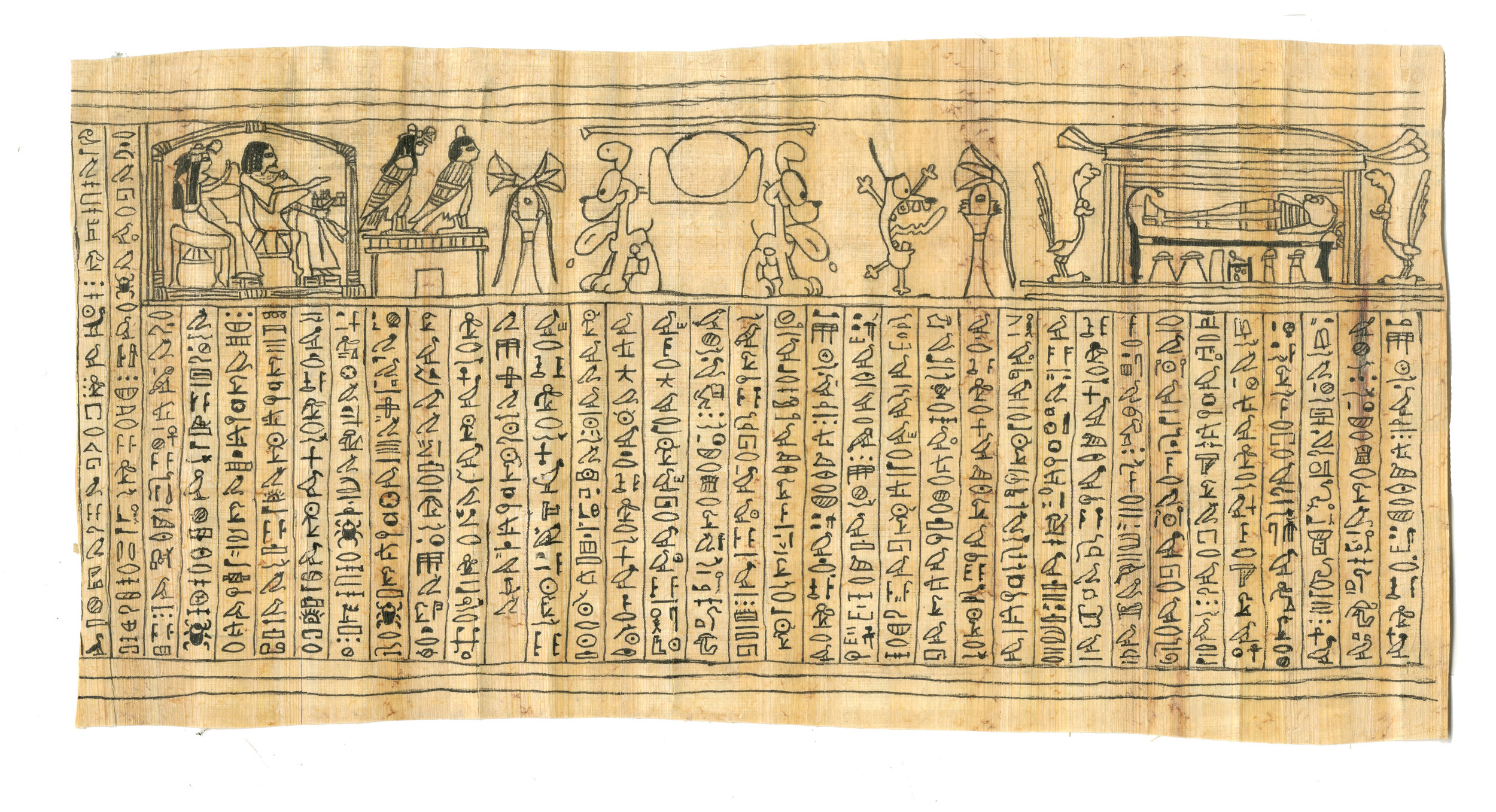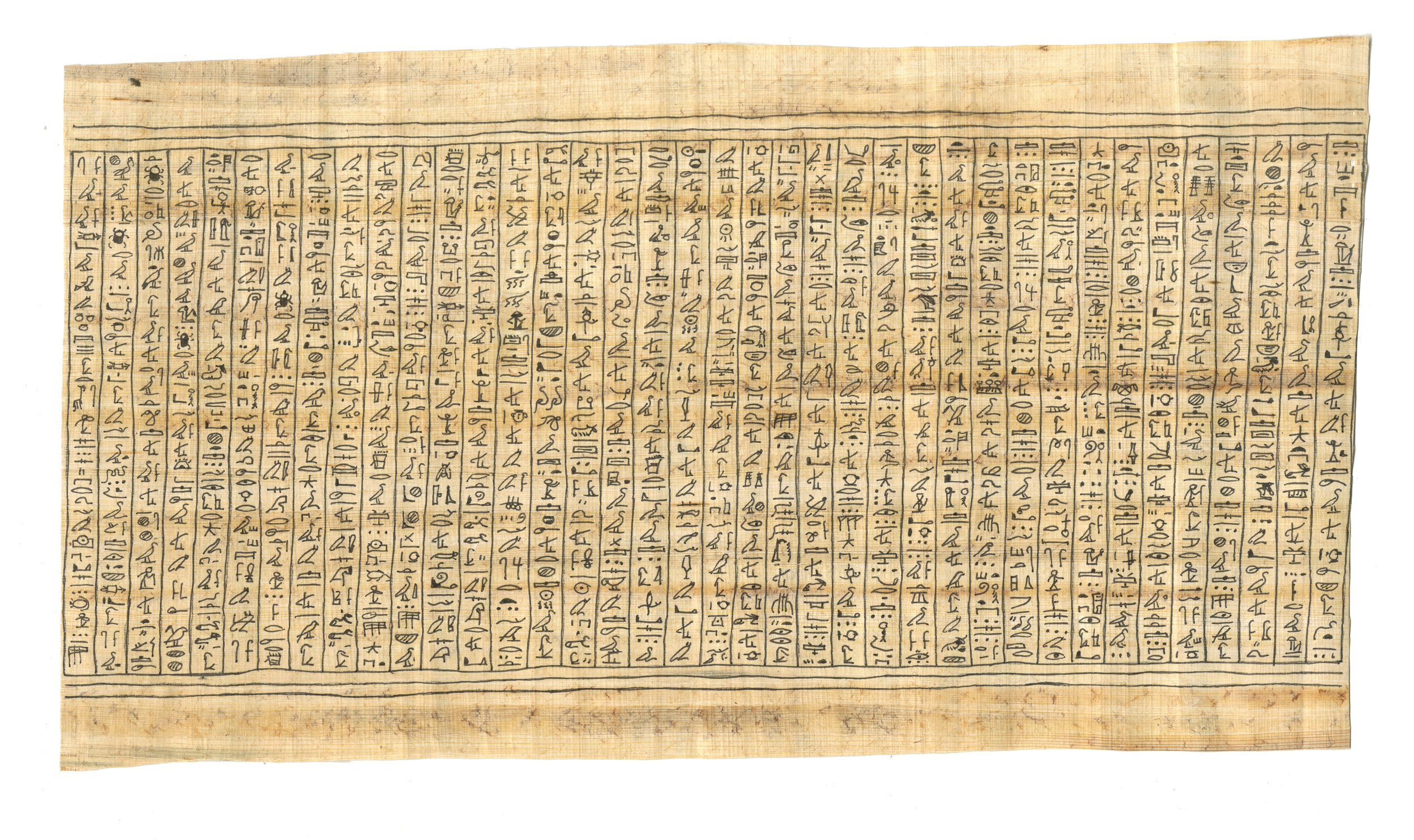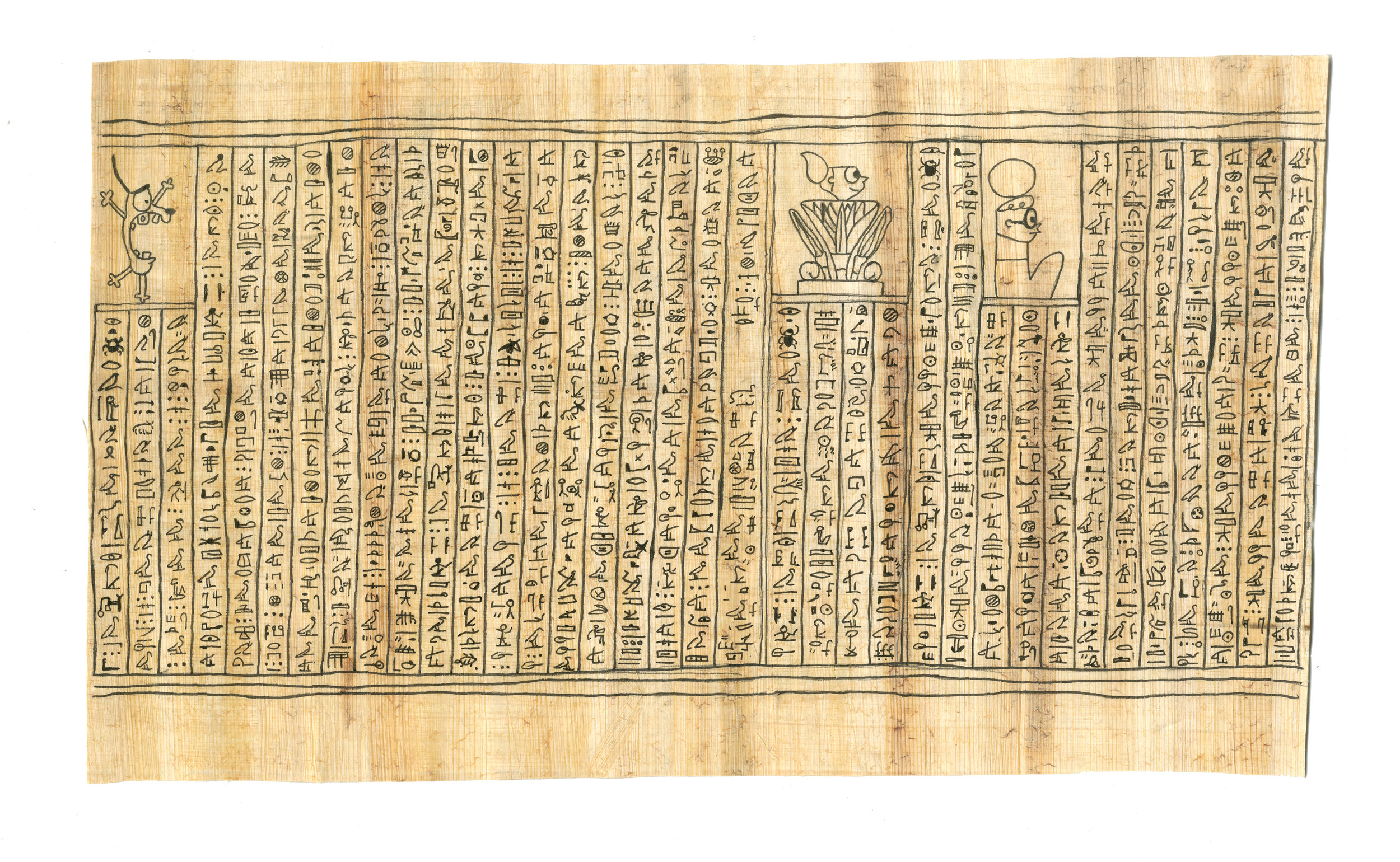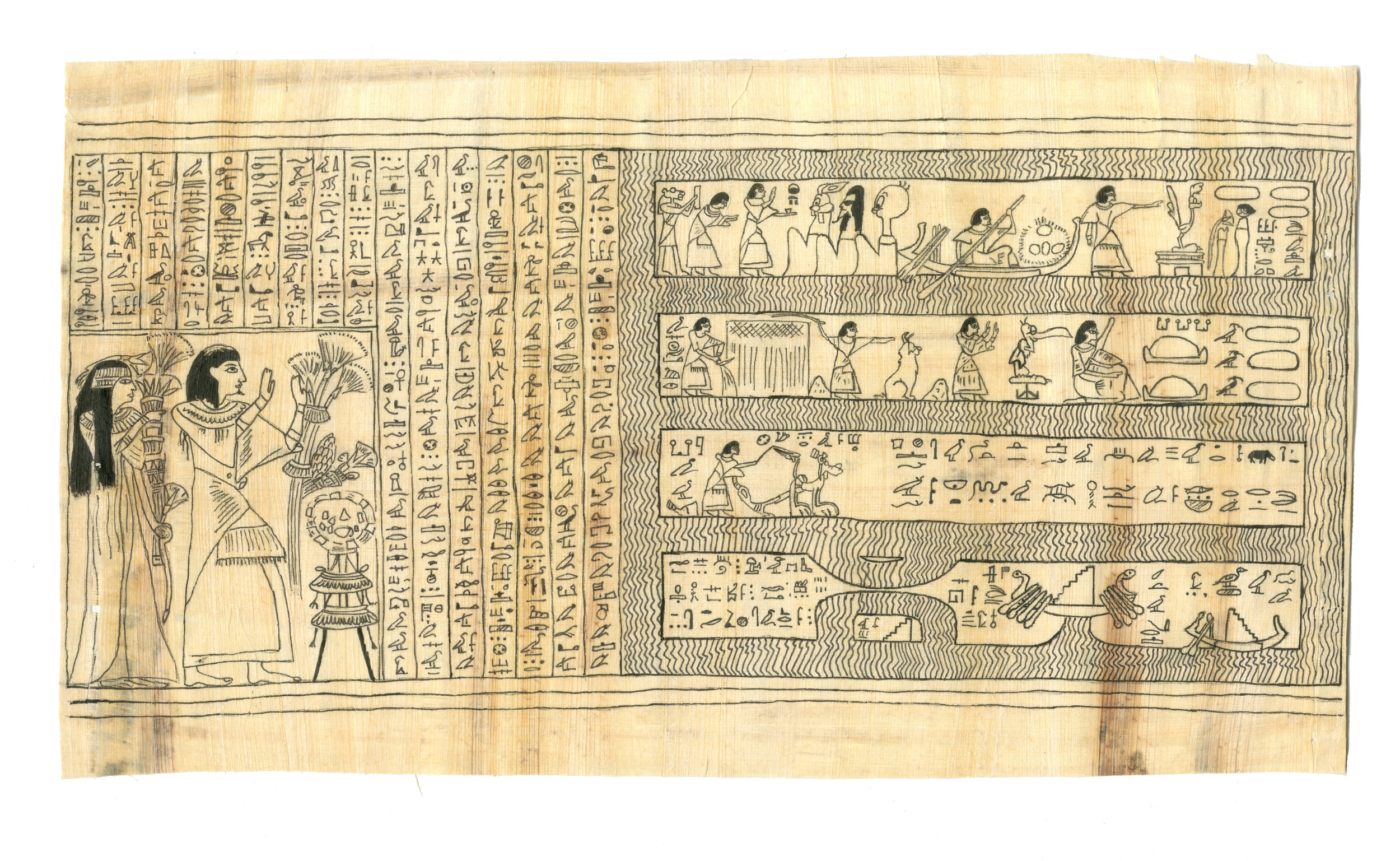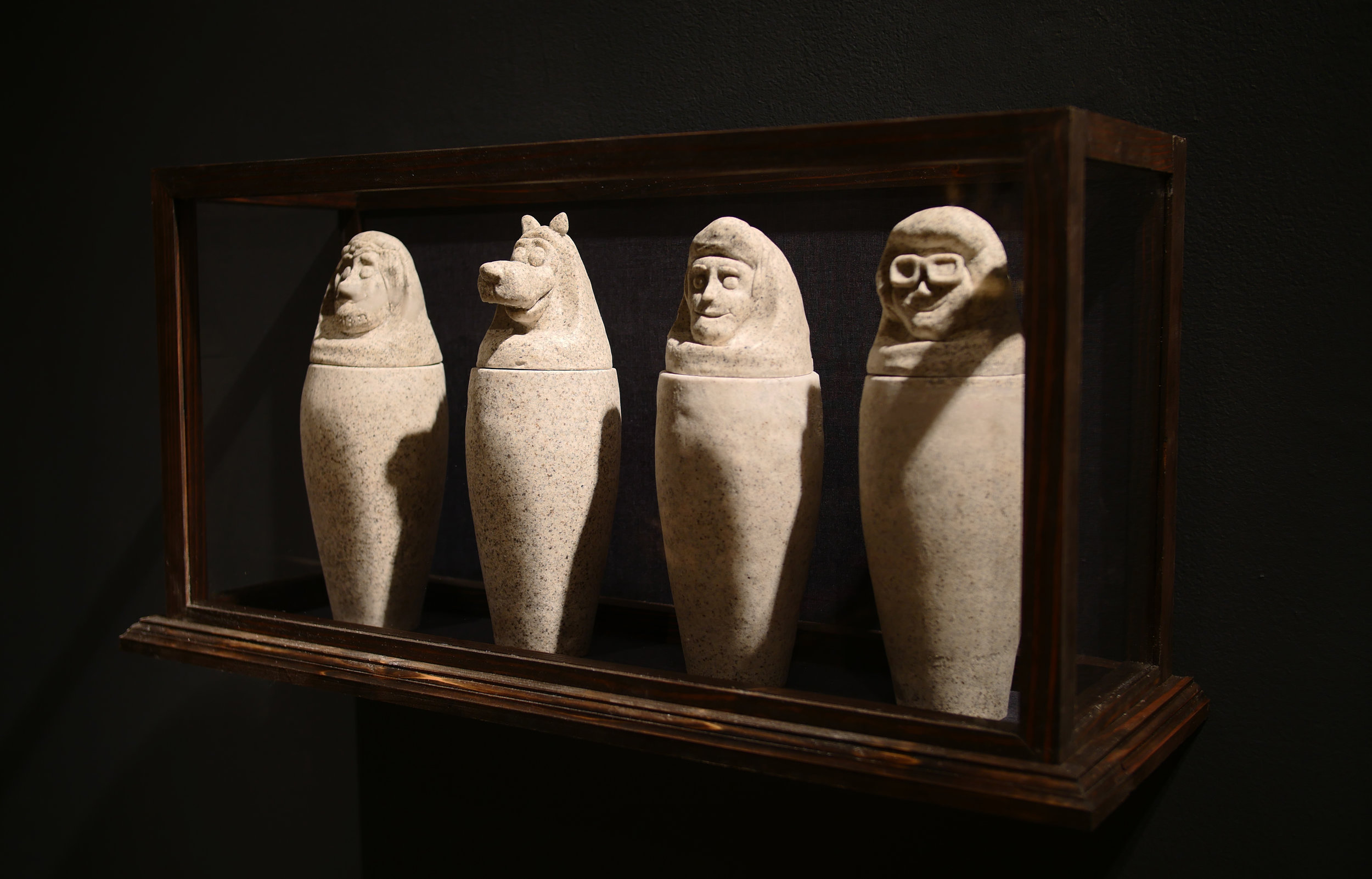Looney Tombs
My series of works, Looney Tombs, invents a new history as popular culture fuses with Egyptian style relics, preservation, and the representation of the animal. Animated cartoon characters of the 20th century transform into gods evoking an ancient Egyptian religion where they are represented and worshipped in the form of mummies, bronze, and stone sculptures. Through the absence of the skin (on a visual level), viewers remain engaged through pop culture aesthetics mixed with Egyptian mummification. The cartoon character becomes a tool of manipulation to alter the viewer’s perception of the animal within, where the mummified animal wrapped in linen gains a new soul and identity in the shape of a contemporary, animated character. Throughout their history, cartoon characters entertained their audiences with high levels of violence; however, the humanization of animals ultimately took the cruel aspect out of contention. In parallel, ancient Egyptians veiled the deceased animal through wrapped linen, using spirituality to convey a purposeful death. My mummified animals create a universe where history and present day collide. Ancient Egyptian gods and animal mummies experience a rebirth in the form of 20th century cartoon characters.
Bronze, wood, marble, and linen are utilized to create representations of famous cartoon characters for the unseen, mummified body. In my series of bronze sculptures and mummified animals, I create an alternative reality through ancient Egyptian and modern pop culture imagery. By replacing animal imagery of the gods with recognizable cartoon characters, the perception of the unseen carcass gains a projected personality.
Throughout my graduate career, I have been experimenting with taxidermy, materiality of the skin, and the illusion of cruelty through humor. Preservation of the skin exists as a driving element of my practice. Experimenting with the replacement of skin with different materials such as wood or bronze sculpture, the conversation moves away from the animal as a once living creature.
The biggest dispute with my work in the past revolved around the real animal and my relationship with it. The unknown, empathetic story about the animal received more attention and questions than the message of the work. By aesthetically distancing myself from the skin and taxidermy, the conversation moves forward to the viewer’s immediate observation - a collection of mummified animals and bronze, stone, and wood relics modeled after animal cartoon characters. Upon closer inspection, printed CT scans displayed beside a number of sculptures introduces the viewer to the body within the mummy. While the scans reveal the deceased animal, the printed image distances the viewer from its death.







